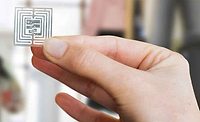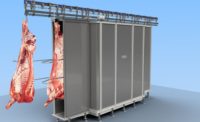Emerging food safety technology can cut costs and conserve water

While water is considered a renewable resource, it’s also a finite one, and food companies should strive to be good stewards of this increasingly valuable commodity. The cost of water continues to rise. Yet, so does public pressure and regulatory oversight aimed at keeping the food supply safe.
The challenge for processors is using water efficiently and effectively. Is it possible to reduce water usage without increasing food safety risks?
Leaders in the industry are developing and implementing innovations that will not only reduce water usage but improve overall food safety efforts. Technology is coming to market that uses water more efficiently while simultaneously delivering greater pathogen reduction.
For example, beef processing uses more water than any other type of food production, and one of the biggest offenders is the head and tongue wash. That’s because the amount of water used is highly disproportionate to the meat obtained. But the head and tongue can carry higher levels of bacteria, which could cause contamination down the line and potentially ruin a large amount of a product, such as ground beef.
Emerging technology allows beef processors to do more with less. In a conventional head and tongue wash cabinet, the water is constantly running, spraying in every direction and often missing the mark.
New equipment with precision application technology utilizes a three-dimensional wash that follows the head and tongue through the cabinet with contoured arbors, shutting off until the next head and tongue enters. This means 100 percent of the solution hits the target and waste water is greatly reduced.
Most existing systems use around 100 gallons of water per minute, or 14 gallons per head. But tests show this new approach to the head and tongue wash could reduce water usage to 45 to 50 gallons per minute at six gallons per head on average – a potential reduction of 50 percent or more.
Another exciting development in food safety technology is the advancement of electrostatic intervention technology. Put simply, by applying an electrical charge to the antimicrobial solution, transfer efficiency increases dramatically. When done correctly, electrostatics have the potential to reduce water and chemical usage by as much as 95 percent in comparison to conventional methods such as dip tanks. This precision application technology also provides log reductions in the range of 2.0 to 2.6 or better – a 10x improvement on traditional methods.
Facility cleaning and sanitation is another area with plenty of room for managing water usage. One of the best ways to address water waste is to automate key areas of the sanitation process. This automation technology can create repeatable processes that eliminate wasteful human error while improving accuracy and providing transparency into water usage through data and reporting features.
The benefits of investing in food safety breakthroughs are clear. Food companies stand to cut costs related to both water usage and wastewater treatment. Yet, they will also enhance food safety and sustainability efforts, ultimately protecting brand reputation and boosting the bottom line.
Looking for a reprint of this article?
From high-res PDFs to custom plaques, order your copy today!






